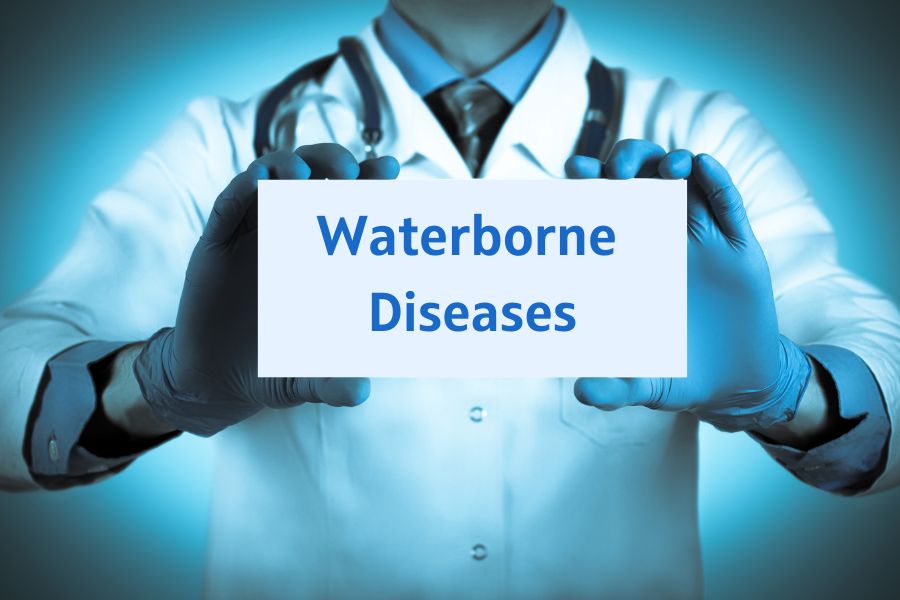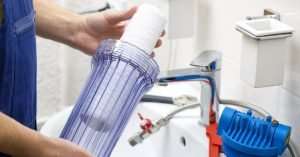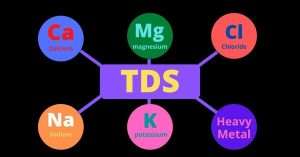Understanding waterborne diseases, their spread, and prevention methods is crucial for everyone, especially those living in areas with poor sanitation and water quality concerns. This guide aims to provide you with comprehensive information on these topics, empowering you to take preventive measures and ensure access to safe and clean water for all.
How Do Waterborne Diseases Spread?
It is primarily spread by drinking contaminated water or coming into contact with it. Such contamination can occur due to several factors, such as sewage discharge, agricultural runoff, and natural disasters. Microorganisms, such as bacteria, viruses, and parasites, in the water can cause infections in humans.
Major Causes of Contaminated Water
- Sewage discharge from households and industries
- Agricultural runoff containing fertilisers and pesticides
- Floods and natural disasters that mix sewage with drinking water
Modes of Transmission
- Contact with polluted water during bathing or washing
- Consuming contaminated food prepared with unsafe water
- Drinking contaminated water without treatment
- Poor personal hygiene practices
- Direct contact with infected individuals
Read this also: What is effects of water pollution?
List of Waterborne Diseases
This affects millions of people annually. Below are some of the most common and dangerous ones.
1. Cholera
Caused by Vibrio cholerae, cholera spreads in areas with poor sanitation. It causes severe diarrhoea and dehydration, which can be fatal within hours if untreated.
2. Typhoid Fever
Caused by Salmonella Typhi, typhoid fever spreads through contaminated food or water. Symptoms include high fever, weakness, abdominal pain, and sometimes a rash.
3. Dysentery
Dysentery is an intestinal infection that causes severe diarrhoea, often accompanied by blood or mucus. It can be caused by bacterial (Shigella) or parasitic (Entamoeba histolytica) infections.
4. Hepatitis A
A viral infection affecting the liver, hepatitis A spreads through contaminated food and water. Symptoms include jaundice, fever, nausea, and fatigue.
5. Giardiasis
A parasitic disease caused by Giardia lamblia, it spreads via contaminated water and causes diarrhoea, abdominal cramps, and bloating.
Waterborne Diseases Prevention
Preventing waterborne diseases is a collective responsibility that requires access to clean water, improvements in sanitation, and effective personal hygiene practices. By following these guidelines, you can play a significant role in reducing the risk of waterborne diseases in your community.
1. Water Treatment and Sanitation
- Boil or filter water before drinking.
- Install home water purification systems.
- Improve sewage treatment facilities.
2. Personal Hygiene
- Wash your hands with soap before eating or cooking.
- Avoid touching your face with unwashed hands.
- Use hand sanitisers when water is unavailable.
3. Food Safety
- Cook food thoroughly.
- Wash fruits and vegetables with clean water.
- Avoid eating from unhygienic sources.
4. Public Awareness
- Educate communities about the dangers of waterborne diseases.
- Promote safe water storage practices.
5. Government Initiatives
- Invest in clean water supply systems.
- Implement strict waste disposal regulations.
Conclusion
Waterborne diseases pose serious health risks but are preventable through proper hygiene, access to clean water, and community education. Governments, communities, and individuals must collaborate to reduce contamination and enhance water safety. By following prevention methods, we can significantly reduce the spread of these diseases and protect public health.
Read this also: India Drinking Water Standards Parameter Limits
FAQs
What are waterborne diseases?
Waterborne diseases are illnesses caused by drinking or coming into contact with water contaminated by harmful microorganisms, such as bacteria, viruses, and parasites. These diseases often occur in areas with poor sanitation and can lead to serious health problems such as diarrhoea, typhoid, cholera, and hepatitis A.
How can waterborne diseases be prevented at home?
To prevent waterborne diseases at home, always boil or filter your drinking water, store it in clean containers, wash your hands before eating, and thoroughly wash fruits and vegetables. Avoid consuming food from unhygienic sources, and regularly clean water storage tanks.
Which areas are most affected by waterborne diseases?
Waterborne diseases are most common in regions with inadequate sanitation, poor waste management, and limited access to clean drinking water. Flood-prone areas, rural regions, and developing countries often report higher rates of contamination due to increased risks of contamination.
Why are waterborne diseases dangerous?
Waterborne diseases can cause severe dehydration, organ damage, and even death if untreated. They spread rapidly in communities, particularly where water and sanitation systems are inadequate, leading to outbreaks that can affect large populations.




